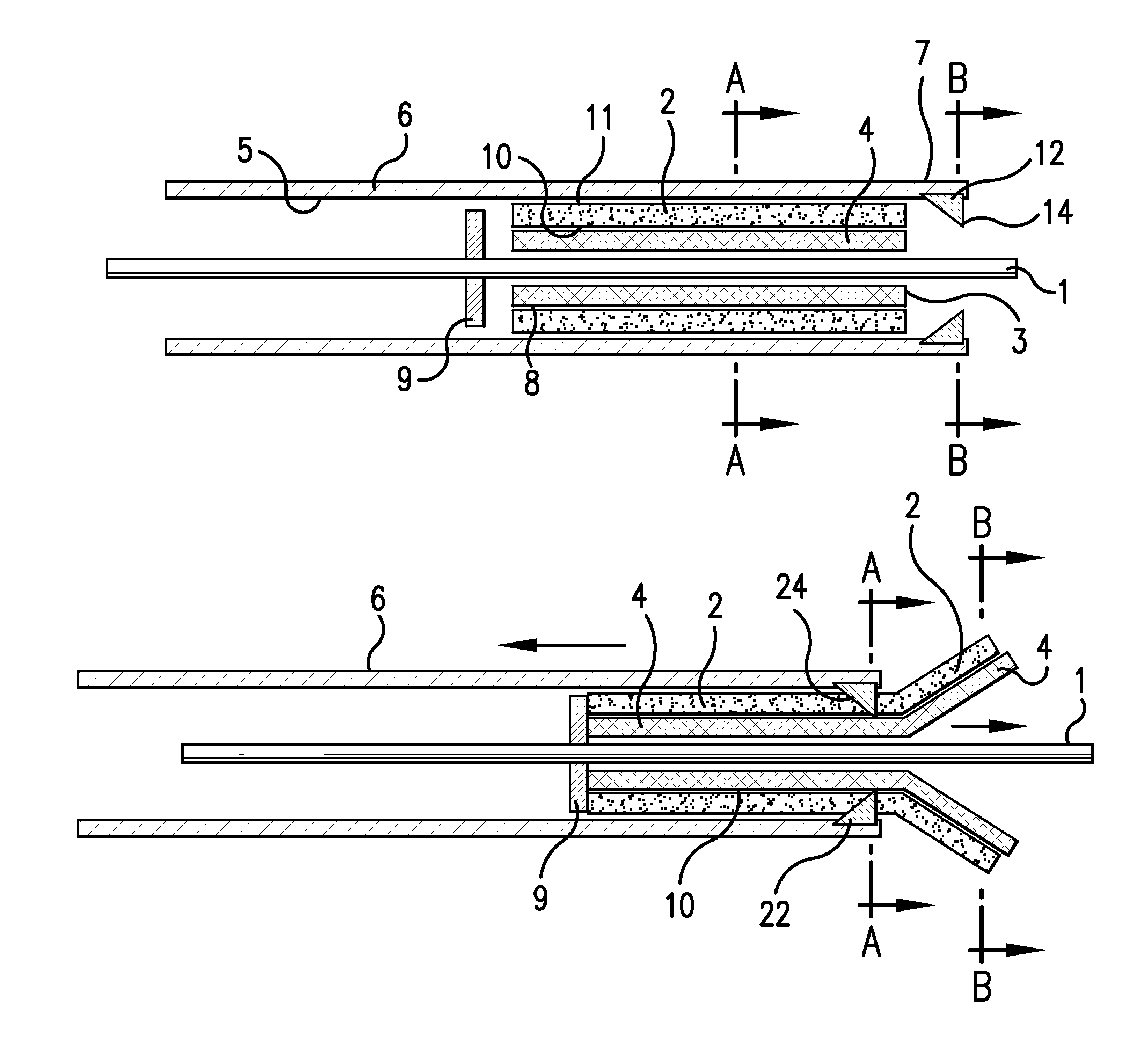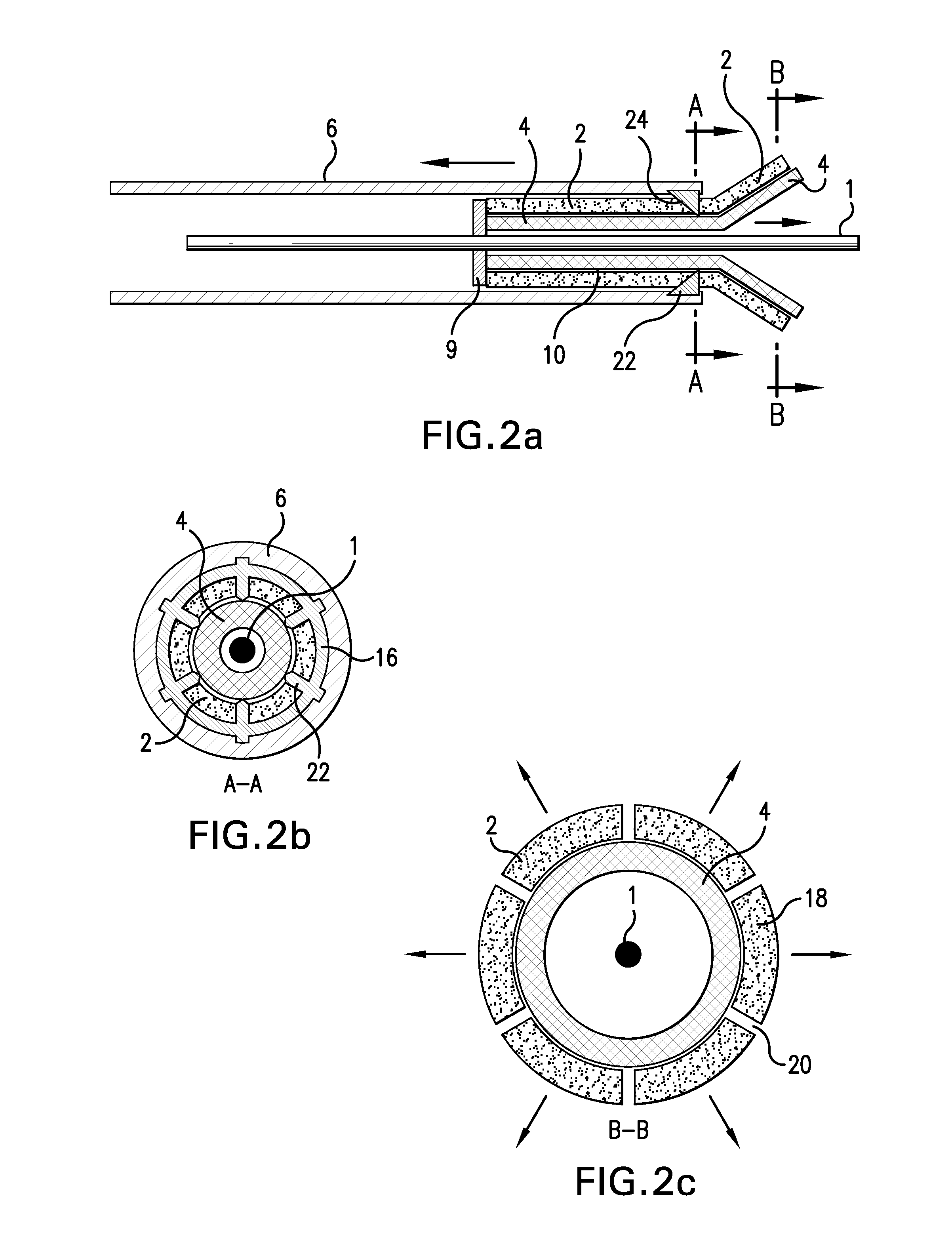Self-expandable stent with a constrictive coating and method of use
a self-expanding, stent technology, applied in the field of self-expanding stents, can solve the problems of significant friction between the outer surface of the stent and the delivery sheath, high frictional force of the longer stent, and significant frictional force, so as to achieve high shear force, significant frictional force, and high shear force
- Summary
- Abstract
- Description
- Claims
- Application Information
AI Technical Summary
Benefits of technology
Problems solved by technology
Method used
Image
Examples
Embodiment Construction
[0017]FIGS. 1a-1c and 2a-2c show an embodiment of a stent deployment system for deploying a self-expandable stent with a coating. The system comprises a constrictive coating 2 and a self-expandable stent 4, both housed within a delivery tube 6. Since the constrictive coating 2 prevents the self-expandable stent 4 from expanding to its unconstrained form, the stent 4 does not press the coating 2 against the delivery tube 6 with great force. In this embodiment, there is a small clearance space between the coating 2 and the delivery tube 6. Furthermore, if the coating 2 does abut the delivery tube 6, there will be little to no shear forces that could cause damage to the coating 2. A cutting mechanism 12 in the form of an annular ring 16 of blades 22 is mounted at the distal end 7 of the delivery tube 6. A guidewire 1 is used for delivering the stent deployment system to the implantation site within the body. In this embodiment, the guidewire 1 has a proximal stop 9, to assist in the de...
PUM
| Property | Measurement | Unit |
|---|---|---|
| wall thickness | aaaaa | aaaaa |
| wall thickness | aaaaa | aaaaa |
| circumference | aaaaa | aaaaa |
Abstract
Description
Claims
Application Information
 Login to View More
Login to View More - R&D
- Intellectual Property
- Life Sciences
- Materials
- Tech Scout
- Unparalleled Data Quality
- Higher Quality Content
- 60% Fewer Hallucinations
Browse by: Latest US Patents, China's latest patents, Technical Efficacy Thesaurus, Application Domain, Technology Topic, Popular Technical Reports.
© 2025 PatSnap. All rights reserved.Legal|Privacy policy|Modern Slavery Act Transparency Statement|Sitemap|About US| Contact US: help@patsnap.com



